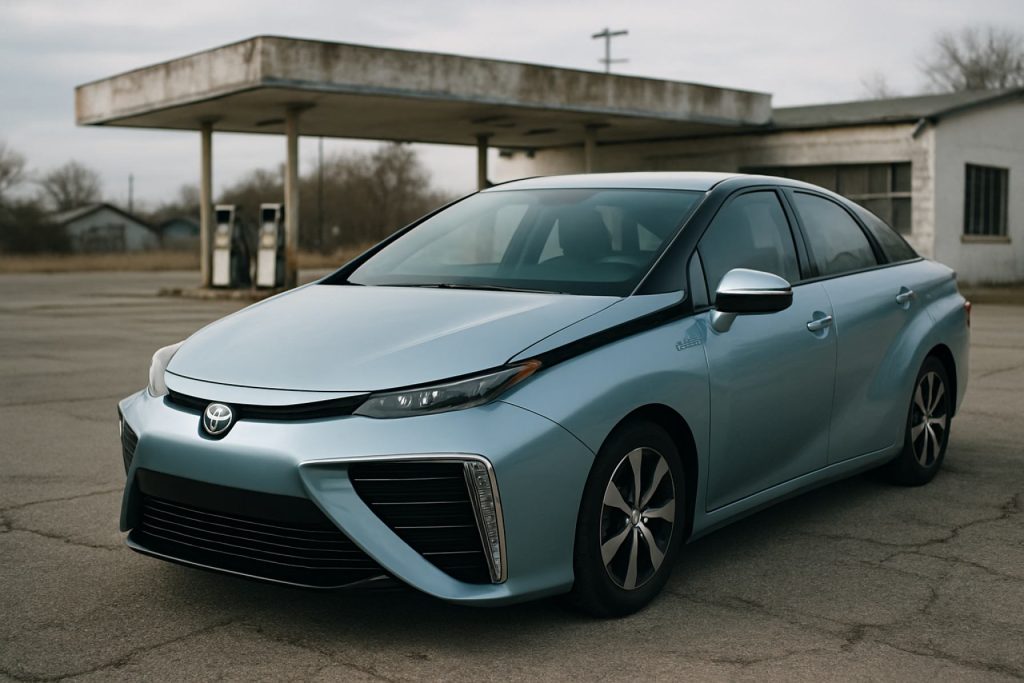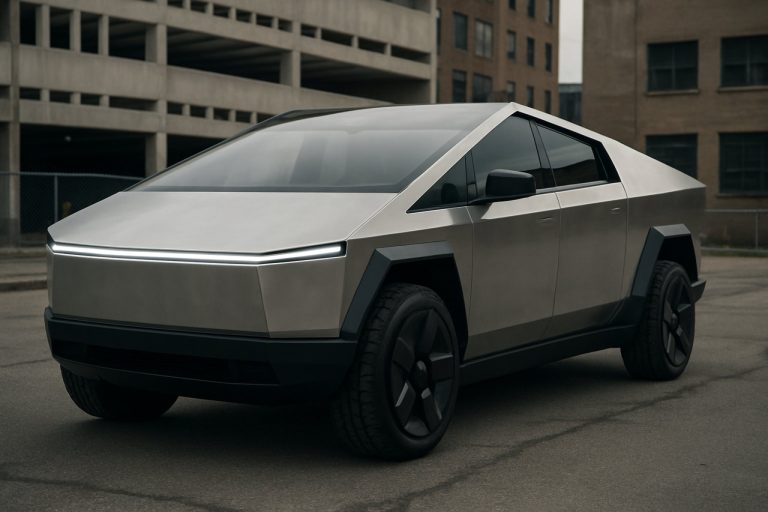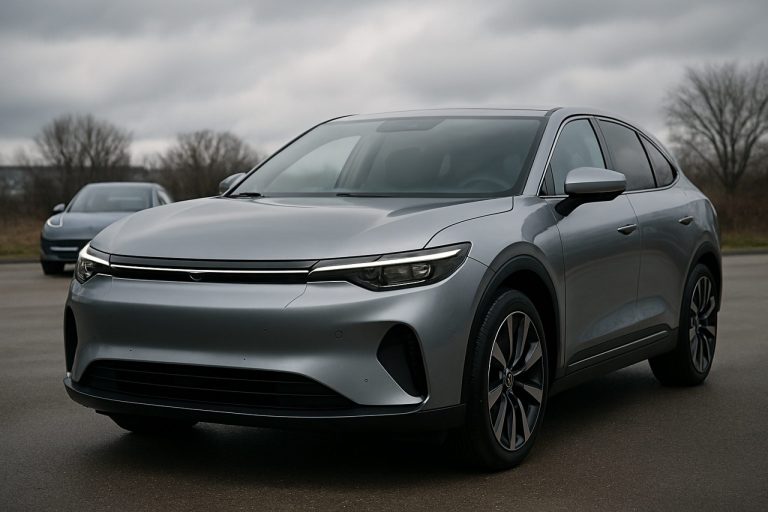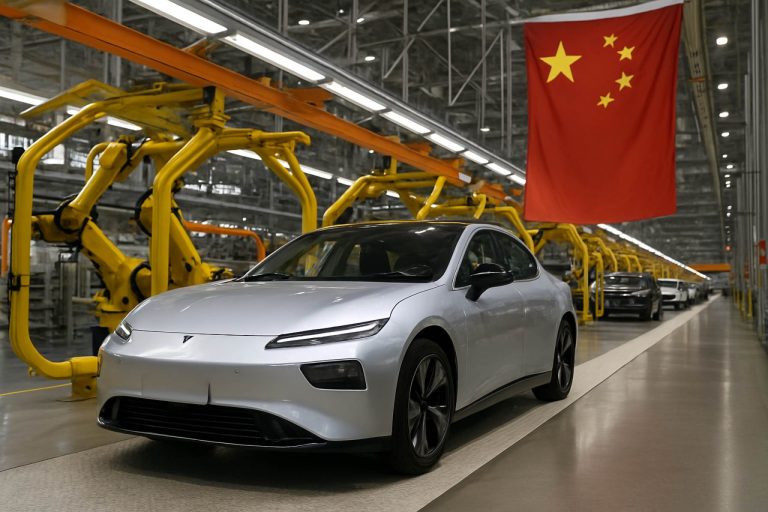
- Hydrogen cars once symbolized a pollution-free future, but as of 2025 remain rare due to persistent challenges.
- Lack of hydrogen fueling infrastructure, especially outside California, severely limits widespread adoption of hydrogen vehicles.
- Most hydrogen is produced from fossil fuels (“gray hydrogen”), undermining environmental benefits and making “green hydrogen” too expensive for now.
- Government support has shifted hydrogen’s focus from cars to heavy industries like steelmaking and long-haul transport, where batteries are less practical.
- Lithium-ion battery technology and electric vehicles (EVs), supported by robust charging networks, have outpaced hydrogen in the race for zero-emission mobility.
- For daily driving, battery EVs clearly outperform hydrogen vehicles in efficiency and cost.
- Hydrogen’s greatest promise now lies in powering heavy industry and shipping, not consumer cars.
Beneath the bright lights of Congress in 2003, President George W. Bush painted a dazzling image: future generations coasting down pollution-free highways in hydrogen-powered vehicles, their only emission a puff of harmless water vapor. That promise—a technological marvel meant to erase oil dependency and clean the skies—sparked hope across the country. Yet, the intervening years proved less triumphant. As of 2025, hydrogen cars remain more myth than reality, existing only in tiny test fleets, while the global push for zero-emission travel has shifted lanes toward electrification.
High Expectations, Hard Realities
For a moment, hydrogen reigned as the darling of sustainable innovation. Major automakers like Honda and Toyota funneled millions into futuristic prototypes, and researchers hailed hydrogen as the universe’s most abundant—and, theoretically, cleanest—fuel.
But that vision failed to materialize for millions of drivers. The reasons aren’t found in willful ignorance or lack of effort, but in a labyrinth of stubborn challenges.
Infrastructure: The Missing Puzzle Piece
While electric cars gained ground with every new charging station, hydrogen vehicles stalled, hamstrung by a lack of places to fuel up. Pumping hydrogen into a car demands robust, high-pressure stations. Even in 2025, fewer than 60 publicly available hydrogen fueling facilities exist across the entire United States, with almost every one concentrated in California. Most Americans have a better chance of seeing a unicorn than a hydrogen fuel pump in their neighborhood.
The Cold Math of Chemistry—and Economics
Hydrogen’s green reputation hides a gray reality. Most of today’s hydrogen, the so-called “gray hydrogen,” comes from splitting natural gas—a process releasing as much carbon dioxide as the fossil fuels it’s meant to replace. Producing “green hydrogen” via clean electricity isn’t just expensive; it’s two to three times costlier than conventional methods, generating a massive price gap that not even government subsidies have closed.
Meanwhile, initiatives like the Inflation Reduction Act have redirected support toward industrial uses of hydrogen—powering steel mills and fertilizer plants—rather than cars. It’s a telling shift in priorities, underlining where the technology can best serve global decarbonization goals.
The Tesla Effect
A new contender emerged as hydrogen’s star slowly faded. Lithium-ion batteries improved at breakneck pace, slashing costs and boosting range. Companies like Tesla revolutionized the car market, building a charging network that put electricity within easy reach for millions. Today, nearly every major manufacturer is pouring resources into battery-electric vehicles, with over $1 trillion slated for EV and battery development by 2030. Hydrogen, by contrast, finds itself relegated to the backseat.
A Simple, Unforgiving Equation
The cruelest blow lies in the numbers. Hydrogen cars require multiple energy conversions—electricity to split water, factories to compress and ship the fuel, and then intricate chemical reactions to generate drive power. Each step bleeds precious energy. Comparatively, electric vehicles draw power straight from the grid with minimal loss. For everyday commuting, batteries simply outclass hydrogen; industry experts confirm that BEVs deliver over three times the efficiency of fuel cell vehicles when using the same green electricity.
Hydrogen’s True Calling
Despite its struggles on the open road, hydrogen has not faded into irrelevance. The element remains essential for heavy industry and the quest to decarbonize steelmaking, shipping, and long-haul trucking—scenarios where batteries fall short. The International Energy Agency predicts a pivotal, if niche, future for hydrogen in achieving net-zero emissions—not in garages across suburbia, but fueling distant cargo ships and powering energy-intensive factories.
The Takeaway for Tomorrow
America’s hydrogen car dream wasn’t doomed by technological naïveté, but by the harsh scrutiny of science, economics, and infrastructure. Dreamers like President Bush gave the nation something to chase, igniting a valuable conversation about clean energy innovation. Twenty-two years later, the outcome reflects a familiar truth: breakthrough visions demand more than bold proclamations—they require years of gritty groundwork, resilience, and a willingness to shift direction as facts evolve.
Hydrogen technology will shape the future, though perhaps not in the ways once imagined. For consumers eyeing a cleaner planet, the next ride might not run on hydrogen—but the dream of zero-emission mobility is more alive than ever, if only in a different form.
Hydrogen Cars: What Went Wrong, What’s Next, and How They Still Might Shape the Future of Clean Transportation
Hydrogen Cars—Promise and Pitfalls
Hydrogen cars were once hyped as the future of clean transportation. The vision of zipping around in vehicles that emit only water captured public imagination and drove significant investments from automakers and researchers. Yet, despite decades of hopes and billions spent, in 2025 hydrogen-powered cars are almost mythic, dwarfed by the rapid rise of electric vehicles (EVs).
Let’s delve deeper beyond the headlines, explore why hydrogen cars faltered, uncover lesser-known facts, compare hydrogen to battery EVs, and provide practical recommendations and life hacks for those passionate about sustainable mobility.
Crucial Hydrogen Car Facts and Industry Insights
1. What Is a Hydrogen Fuel Cell Vehicle (FCV)?
– FCVs use a chemical reaction between hydrogen and oxygen in a fuel cell to produce electricity, which then powers electric motors.
– This reaction only emits water vapor, making it theoretically one of the cleanest propulsion methods.
– Examples: Toyota Mirai, Honda Clarity Fuel Cell, Hyundai Nexo.
2. Real-World Use Cases Where Hydrogen Shines
– Heavy-duty transport: Hydrogen excels in long-haul trucking, shipping, and rail where batteries are too heavy or take too long to charge.
– Industrial decarbonization: Essential in steelmaking, refining, and fertilizer production, per the International Energy Agency.
– Backup and grid-scale energy storage: Hydrogen’s energy density enables large-scale, long-duration storage, unlike batteries that degrade over time.
3. Infrastructure: More Than a Missing Piece
– Safety and price: Setting up hydrogen fueling stations is complicated by the fuel’s flammability and the need for expensive high-pressure tanks, pushing the average cost per station to over $2 million (Hydrogen Council, 2023).
– Geographic disparity: As of early 2025, Japan has ~160 public stations, Germany about 100, but almost all U.S. stations remain in California (U.S. Department of Energy).
4. How Hydrogen Is Made Matters
– “Gray hydrogen” from natural gas: Responsible for ~95% of today’s production, emitting substantial CO₂.
– “Blue hydrogen”: Captures CO₂ via carbon capture and storage, but isn’t emission-free or cost-competitive yet.
– “Green hydrogen”: Generated via electrolysis powered by renewables, it’s the eco-ideal but sells for up to $6/kg versus gray hydrogen’s $1–2/kg (BloombergNEF, 2024).
5. Efficiency and Costs—The Cold Math
– Well-to-wheel efficiency: Hydrogen FCVs convert less than 30% of the original green electricity to driving power. Battery EVs reach 70–80% efficiency (U.S. Department of Energy).
– Fueling and operating costs: FCV refueling is faster—3–5 minutes—but hydrogen often costs more per mile than charging an EV, especially outside California.
Controversies, Limitations, and the Electric Shift
– The Hydrogen Illusion: Despite large investments, experts including Elon Musk have dismissed FCVs as “fool cells” for cars, citing wasteful energy conversions.
– Rare metals: FCVs require expensive catalysts (platinum group metals), increasing costs and raising sustainability questions.
– Consumer experience: Less choice, higher sticker prices ($50,000+ for Toyota Mirai), and limited second-hand market compared to the burgeoning EV sector.
– Market forecasts: Analysts like McKinsey predict hydrogen’s major impact won’t be in light road vehicles, but in industrial and heavy-duty segments.
Comparisons—Hydrogen FCVs vs. Battery EVs
Feature | Hydrogen FCV | Battery EV
—|—|—
Refueling/Charging Time | 3–5 min | 30 min–12 hrs (depends on charger)
Range (2024 models) | 300–400 miles | 200–400+ miles
Infrastructure Availability (USA) | ~60 stations | 160,000+ public charging sites
Fuel Cost | $15–$16/kg (USA avg.) | ~$0.12–$0.20 per kWh (USA avg.)
Efficiency | ~30% grid-to-wheel | ~70–80% grid-to-wheel
Main Use Cases | Industrial, heavy transport | Passenger cars, urban transport
Security & Sustainability
– Fuel Cells: High-pressure tanks (up to 10,000 psi) require rigorous safety testing, but no major accidents reported with modern cars.
– Longevity: FCV fuel cells last ~5,000–8,000 hours; battery EVs can last 8–10 years or more before significant range loss.
– Environmental footprint: Battery recycling is advancing fast; hydrogen’s future sustainability depends on scaling up green production.
Predictions and Industry Trends
– Billions in investment: By 2030, over $300B will go to hydrogen infrastructure globally (IEA, Hydrogen Council).
– EV dominance: Over 60% of new car sales in China, Europe, and the US will be BEVs or plug-in hybrids by 2035 (BloombergNEF).
– Niche growth: Expect hydrogen heavy trucks, buses, shipping, and some railway to grow, while car focus shifts to batteries.
Most Pressing Reader Questions—Answered
1. Will hydrogen cars ever become mainstream?
Unlikely in the next decade; battery EVs are far ahead in cost, infrastructure, and consumer adoption.
2. Is hydrogen truly green?
Only when produced via electrolysis with renewable energy; currently, most is fossil-fuel derived.
3. Can I buy and use a hydrogen car now?
Only in limited markets, especially California; check availability of local fueling stations before considering.
4. What’s the best use of hydrogen in the clean energy future?
Heavy transport, industrial processes, grid storage, and possibly aviation as technological advances lower production costs.
5. What about solid-state batteries?
Promising tech could give BEVs faster charging and greater range, further dimming hydrogen’s prospects for passenger cars.
How-To Steps & Quick Tips
– If you’re considering a clean vehicle, check available EV infrastructure in your area at https://www.tesla.com or via the U.S. Dept. of Energy’s charging locator.
– For those invested in clean tech careers, focus on battery systems, grid integration, or green hydrogen industrial applications.
– Want to support cleaner hydrogen? Advocate for renewables and green hydrogen initiatives at local and national policy levels; see information at the International Energy Agency.
Actionable Recommendations
– For everyday zero-emission driving: Prioritize battery EVs for cost, infrastructure, and long-term ownership benefits.
– For industry professionals: Watch hydrogen’s emergence in steel, chemicals, and heavy freight—not passenger transport.
– Stay informed: Green hydrogen might become more relevant as scalability and renewables increase—track developments at major energy agencies and automotive news hubs.
– Sustainable habits: Consider public transit, micromobility, or car sharing as additional sustainable options.
Pros & Cons Overview
Hydrogen FCVs Pros:
– Zero tailpipe emissions.
– Fast refueling.
– Higher range for heavy-duty applications.
Cons:
– High costs for vehicles and fuel.
– Scarce infrastructure.
– Inefficient energy conversion process.
– Limited model selection.
Battery EVs Pros:
– Efficient, low running costs.
– Wide selection, rapidly improving tech.
– Expanding infrastructure globally.
Cons:
– Longer charging times (improving with tech advances).
– Range anxiety for some users.
– Battery degradation—though warranties and tech improvements mitigate this.
In Conclusion: Hydrogen is Far from Dead—Just Evolving
Hydrogen’s promise for cars has faded for now, but its potential in industry, heavy transport, and energy storage remains strong. For consumers, battery electric vehicles are safer bets for sustainable, practical zero-emission mobility today. Keep watching as hydrogen pivots to its true strengths in shaping a cleaner industrial future.
For more insights on energy trends and the evolving clean transport landscape, visit the International Energy Agency and Tesla.
Stay tuned for more updates—clean transportation’s future might just surprise you!



